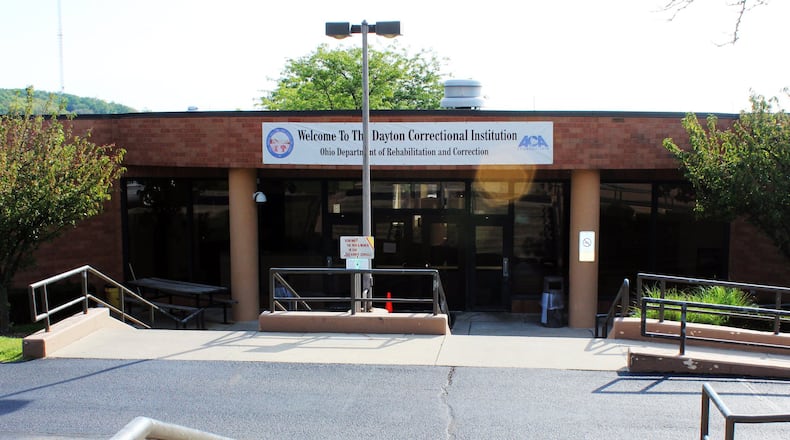One in four of those confirmed coronavirus cases in Ohio are linked to Ohio Department of Rehabilitation and Correction inmates and staff.
RELATED: Ohio Parole Board under fire from victims, inmates, lawmakers
DRC Director Annette Chambers Smith — appearing for the first time at one of Gov. Mike DeWine’s daily briefings — said there are no plans for comprehensive coronavirus testing across all 28 prisons.
DeWine and Chambers Smith both acknowledged that once the virus gets inside a prison, it is difficult to stop its spread — especially in lock ups where inmates live in dormitories instead of cells.
“It’s very difficult and we’ve seen how difficult it is in the prisons it has entered,” DeWine said.
RELATED: DeWine names first woman to head state prison system
RELATED: Coronavirus: Stopping spread in prisons is critical. Is Ohio doing enough?
Ohio DRC employs 12,272, including some 2,000 medical workers, and incarcerates 47,820 in 28 prisons. Because of the close-quarters of inmates and the huge workforce that comes and goes daily, COVID-19 outbreaks in prisons have the potential to spread quickly and then move beyond the walls.
Comprehensive testing of staff and inmates has been conducted at three facilities: Franklin Medical Center, Pickaway Correctional Institution and Marion Correctional. Cases have been confirmed in 24 of 28 facilities.
Testing will be done on inmates who show symptoms or are slated to be released and staff that wants it, Chambers Smith said.
So far, 5,676 inmates have been tested — 3,890 positives.
Two staff members — nurse Tina Reeves and officer John Dawson — and 29 prisoners have died of COVID-19, the state reports.
Sally Meckling, spokeswoman for the employee union that represents DRC workers, said the state needs to expand testing to other prisons with confirmed cases and send more personal protective equipment for corrections officers.
“We want testing everywhere. We want to know how safe our people are. We see an uptick at Belmont (Correctional Institution) right now. Let’s test everyone,” she said.
Ohio Civil Service Employees Association President Chris Mabe said: “We know lack of testing and inadequate PPE is a bigger problem nationally. But it has local consequences every single day for front line workers in our prisons. Our corrections employees are wearing homemade masks or reusing masks over and over. It’s not safe and it’s putting lives at risk.”
Corrections officers are provided masks for each shift, DRC spokeswoman JoEllen Smith said.
Meckling also said while the Ohio National Guard is helping at some prisons and at Ohio State University Wexner Medical Center, where 78 inmates are being treated, more help is need.
“We appreciate that the National Guard has been called in,” Meckling said. “We just think it needs to be reassessed whether there needs to be more.”
The corrections department communicates regularly with the Ohio National Guard, Smith said.
“They are prepared to provide assistance if it becomes necessary at other locations,” she said.
Visits in the prisons have been halted since early March, meals have been cut to two a day, recreation options have been more limited and staff submit to daily health screenings. Prisoners are grouped by housing units to limit intermingling.
“Guys are getting upset and they’re getting anxious,” Mansfield Correctional inmate David Copeland said.
Inmates across Ohio are housed in cells or open dormitory rooms, depending on the prison. Even with cell blocks, inmates are mingling, he said.
“When they let us out in the day room, we’re not in a social distance situation. They’re playing cards, they touch the ice machine, they touch everything. We are in a congregate setting, much like a nursing home and that’s why this … is spreading like wild fire.”
David Singleton, director of the Ohio Justice & Policy Center in Cincinnati, said Chambers Smith has been a national leader in taking steps to mitigate the virus.
“But we need mechanisms to allow for more safe and responsible release of people who are low-risk of recidivism and high-risk of complications from the deadly virus,” he said.
About the Author

